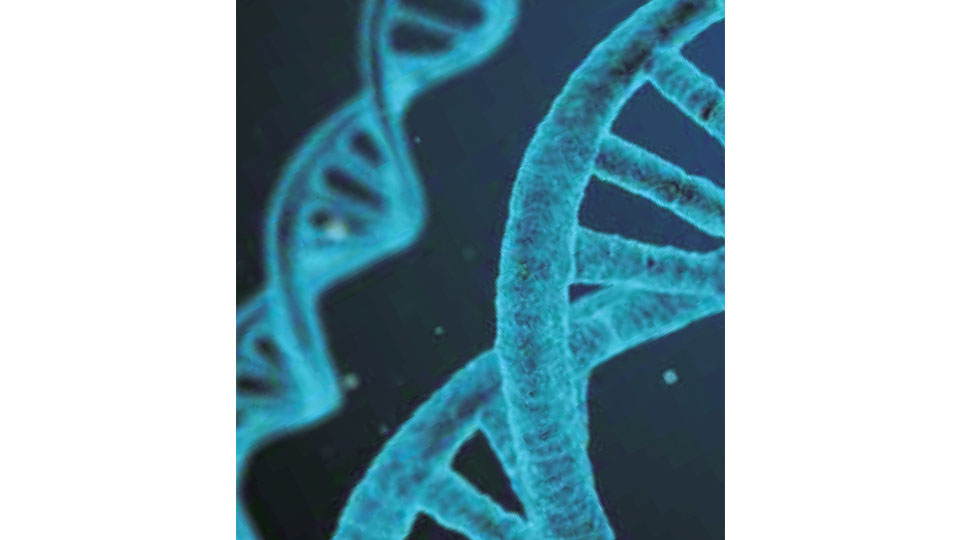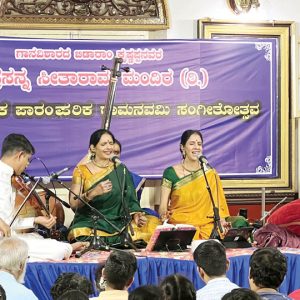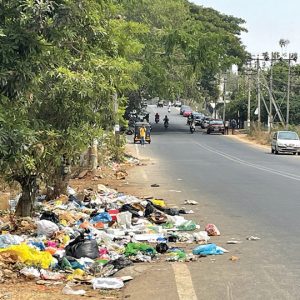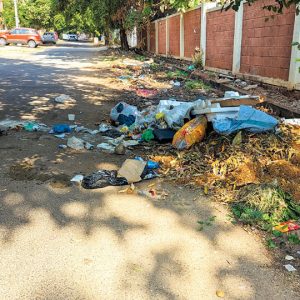[Karma] is considered as the sum of a person’s actions in the present and previous states of existence, and is viewed as determining their life in future existence(s).
DNA molecules were created at some point in space, by an interaction of mass and energy at some point in time.
[Continued from yesterday]
By S.G. Vombatkere
Each biological structure is a repository of mass and energy and also a dynamic representation of its predecessor or ancestor flows of mass and energy. A biological entity may be viewed as a dynamic, complex mass-energy database being continuously updated, due to continuously changing mass and energy streams in space-time. All matter (possessing mass and charge) and energy is the result of complex space-time interactions of mass and energy in cosmic, geological and biological processes.
Every individual biological organism [‘organism’ is from ‘organisation’ of discrete parts], living or dead, in every species, is unique. The reason for uniqueness is that each organism is, or was, the outcome or result of a previous unique, temporal set of flows, interactions and movements of mass and energy, from creation (birth), growth, reproduction and existence, at some point(s) in time. Every biological entity inherits physical and personality traits based upon its organised mass-energy ancestry and these may get modified based upon environmental factors after birth.
Biological entities draw mass and energy from other flows — as food — for their survival, growth and reproduction. Biological reproduction is the physical mass-energy process of transmitting genetic information through exchange of genetic material, which itself is the result of flows of mass and energy. The outcome of biological reproduction is a unique, new biological structure possessing its own DNA and mass-energy flow ancestry.
When biological structures cease to draw mass and energy from their environment of mass-energy flows, their life processes cease, their physical structures collapse (decay or death) and their constituent mass becomes a part of another biological or non-biological flow of mass and energy.
Karma
Karma is a Sanskrit word that roughly translates to “action” in English and includes acts of commission or omission. It is one of the tenets of Hindu philosophy and includes the concept of earlier and subsequent states of existence. It is considered as the sum of a person’s actions in the present and previous states of existence and is viewed as determining their life in future existence(s). It is understood as a law of a “phenomenal world” and also sometimes viewed as an interpretation of causality. (Note 1)
The tenet of karma — like other Hindu tenets such as Samsara, Dharma or Guna — is embedded in the philosophical concept of an unknowable, immanent Brahman, which manifests in many ways, one of them being our observed space-time universe.
Karma is predicated upon the birth of a biological entity, from its life in a previous existence and following its death in the present existence, of its re-birth into a subsequent existence. It is a “model” which may explain — notably, without proof — some of the variability in human and other biological existence, such as physical or mental disability at birth, endowment with exceptional physical or mental ability, being born of certain parents in a certain social milieu, circumstances of life, progeny and death, etc. Importantly, karma includes volition — the ability to make decisions or choices and exercise will — of the biological entity in past, present and future existences.
The cycles of past, present and future in space-time, are believed to continue unbroken, unless and until the individual breaks it by attaining “moksha,” which is a transcendent state of emancipation, enlightenment, liberation, or release from mortal bonds.
Some thinkers view the karma “model” as a social tool of a dominant section of society, to retain and perpetuate power and control within society, by explaining away social inconsistencies and subduing or suppressing volition and will, among subaltern classes. The present discussion focusses on the tenet of karma after non-judgementally flagging this “social-tool” aspect of karma.
Karma is generally accepted as divided into three components, which determine the form that life takes in the present existence and the form that it may take in a subsequent existence. The three components are Prarabdha Karma, Samchita Karma, and Aagami Karma. The present discussion attempts to interpret these components of karma in terms of mass and energy flows in a changing space-time universe, without commenting on the validity or otherwise of the tenet of karma.
Prarabdha Karma
As tenet, karma is beyond our control, similar to one’s progenitors or parents, one’s physical condition at birth, one’s physical characteristics and the family’s socio-economic status. It is accumulated karma of previous births (accrued from previous lives) which also gives us our innate characteristics, aptitudes, tendencies and interests. These are the result of acts of omission or commission in a previous birth. [The knowledge or details of such acts and their contexts are obviously not known to the individual in the present existence, although some people claim to “remember” past lives]. Thus, events in the past being unchangeable, Prarabdha Karma is viewed as “karmic backlog.”
From mass-energy flows, human birth is the result of the mass-energy flows of the parents by transfer of genetic material (DNA) for fertilisation. The infant at birth has also been influenced by the environment that the mother — being a part of mass-energy flows in her own surroundings — provides during the nine months gestation inside the mother’s uterus. The DNA of the infant is some combination of the DNA of both parents. It determines the sex and physiology and several factors concerning its post-partum physical and mental development.
Every infant at birth is the product of mass-energy flows of its parents, each of whom are the product of mass-energy flows of their parents. Every child has two parents, four grandparents, eight great-grandparents and so on, up the ancestral chain and is therefore the product of innumerable ancestor mass-energy flows and interactions.
Whether the dominant or the recessive gene expresses in any particular reproductive process of mass-energy flows, it is apparently random. Also random are the energy flows impacting DNA, possibly causing mutations in genes. There is thus a conflicting combination of randomness and determinism involved in the outcome of the complex flows of mass and energy that go into the birth of a human child.
Further, every parent at any level of the ancestral chain, would have lived some years before reaching reproductive age and his/her genetic material could/ would have been influenced by environmental factors, including by all acts (energy-mass flows and interactions) of the parent in that period. More precisely, a parent does not pass on genetic material to the next generation exactly as he/she received it at birth.
All the foregoing considered together is the space-time genetic heritage of every child at birth. The child is a biological structure, an outcome of the complex mass-energy flows and interactions of its particular ancestral space-time spectrum.
Without ascribing values of “good” or “bad” to acts of commission or omission by any parent at any level of the space-time ancestral chain, the foregoing is Prarabdha Karma, interpreted in terms of energy-mass flows.
e-mail: [email protected]
[To be continued]








Recent Comments